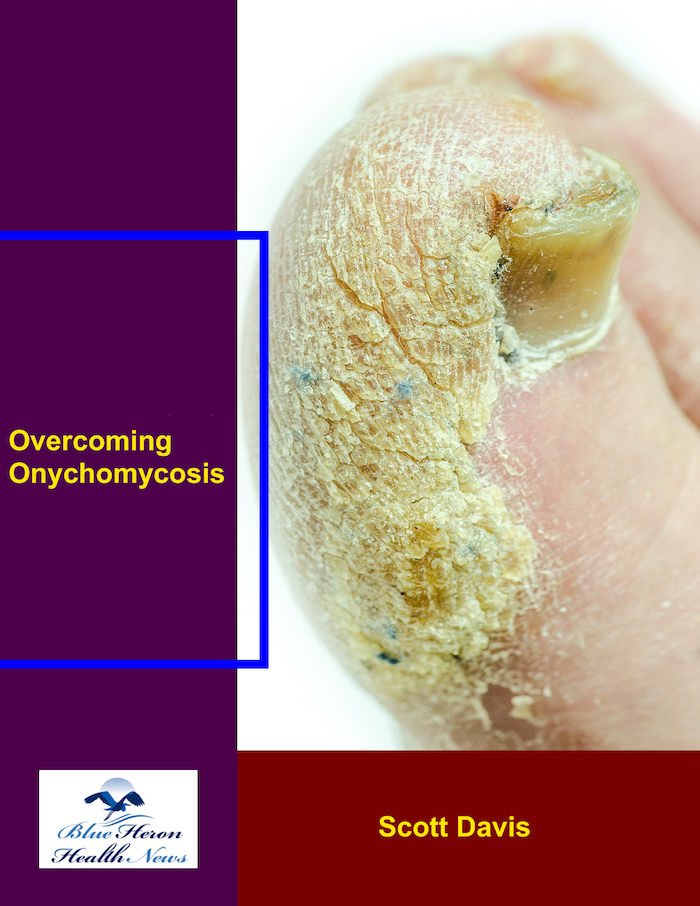
Overcoming Onychomycosis™ By Scott Davis If you want a natural and proven solution for onychomycosis, you should not look beyond Overcoming Onychomycosis. It is easy to follow and safe as well. You will not have to take drugs and chemicals. Yes, you will have to choose healthy foods to treat your nail fungus. You can notice the difference within a few days. Gradually, your nails will look and feel different. Also, you will not experience the same condition again!
What are the challenges of treating total dystrophic onychomycosis?
Total dystrophic onychomycosis (TDO) is a severe form of fungal nail infection that leads to the complete destruction of the nail. It is particularly difficult to treat due to the following:
1. Impaired Drug Penetration
The infected, thickened, and brittle nail is difficult for topical antifungals to penetrate.
Systemic antifungal drugs have to reach the nail bed through the bloodstream, which takes months.
2. High Recurrence Rates
Despite successful treatment, recurrence is common due to residual fungal spores in the environment or reinfection from untreated skin or nails.
3. Slow Nail Growth
Toenail growth is slow (1-2 mm a month), thus taking 12-18 months for the entire regrowth, and the treatment period becomes lengthy.
The slow process increases the possibility of non-adherence to treatment completion.
4. Systemic Antifungal Side Effects
Oral antifungals like terbinafine and itraconazole have a risk of liver toxicity, drug interactions, and gastrointestinal side effects.
Those with liver disease, heart disease, or certain medication regimens may not be good candidates for systemic therapy.
5. Treatment Resistance
Some fungal species, like Trichophyton rubrum, have resistance to antifungal medications, which reduces the effectiveness of treatment.
6. Underlying Conditions
Diabetes, impaired circulation, and immunosuppressive conditions (e.g., HIV, chemotherapy, or organ transplants) predispose and make the treatment more difficult.
Diabetic patients also develop secondary infections and foot ulcers.
7. Few Effective Alternative Therapies
Laser therapy and photodynamic therapy have shown inconsistent results and are expensive.
Nail avulsion (chemical or surgical) is an option but requires long-term maintenance to prevent reinfection.
8. Patient Compliance
Treatment duration and need for daily topicals application or frequent oral medication use make compliance difficult.
Some patients stop treatment prematurely upon improvement of symptoms and relapse.
Would you like some recommendations for the best available treatment options?
Management of distal subungual onychomycosis (DSO) in immunocompromised patients must be more cautious and aggressive due to their increased risk of chronic infection, recurrence, and systemic complications. Treatment typically includes:
1. Confirmation of Diagnosis
Nail clippings and culture (to identify causative fungi, typically Trichophyton rubrum)
KOH preparation (to identify fungal elements)
Periodic acid–Schiff (PAS) staining (for histological confirmation)
PCR testing (for faster and more specific pathogen identification)
2. Systemic Antifungal Therapy (First-Line)
Immunocompromised patients can be treated with oral antifungals as an alternative to, or in combination with, topical treatment:
Terbinafine (250 mg/day for 6–12 weeks) – First choice due to its high cure rate and tolerability.
Itraconazole (pulse therapy: 200 mg twice daily for 1 week/month for 3–4 months) – Second choice if terbinafine is contraindicated.
Fluconazole (150–300 mg once weekly for 6–12 months) – Less effective but used in some cases.
Considerations:
Monitor LFTs, especially for terbinafine and itraconazole.
Adjust dosing in patients with liver or renal impairment.
3. Topical Therapy (Adjunctive or Mild Cases)
Efinaconazole 10% solution (Jublia) – Effective but slow.
Tavaborole 5% solution – Alternative.
Ciclopirox 8% lacquer – Less effective but may help in combination therapy.
4. Nail Debridement
Regular mechanical debridement (grinding or trimming of hypertrophied nails) facilitates topical penetration.
Chemical debridement (urea preparations) for hypertrophied nails.
5. Preventive Measures
Foot hygiene: Dry feet, changing socks frequently.
Prevent trauma: Trauma protection for the nails to prevent secondary bacterial infections.
Footwear selection: Breathable shoes, antifungal powders.
6. Treating Underlying Conditions
Diabetes management (if present) to prevent worsening of infections.
Immune system support: Adequate control of underlying immunosuppressive disorders (e.g., HIV, organ transplant medications).
7. Alternative or Emerging Therapies
Laser treatment (Nd:YAG or diode lasers) – May be useful in resistant cases.
Photodynamic therapy – Investigational.
Do you want specific patient group recommendations, e.g., HIV, diabetes, post-transplant immunosuppression?
Overcoming Onychomycosis™ By Scott Davis If you want a natural and proven solution for onychomycosis, you should not look beyond Overcoming Onychomycosis. It is easy to follow and safe as well. You will not have to take drugs and chemicals. Yes, you will have to choose healthy foods to treat your nail fungus. You can notice the difference within a few days. Gradually, your nails will look and feel different. Also, you will not experience the same condition again!